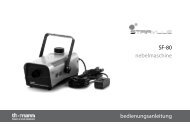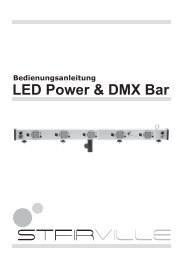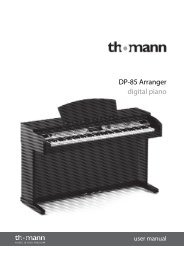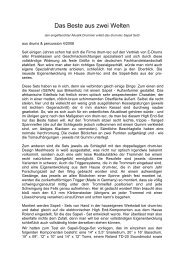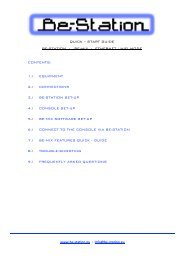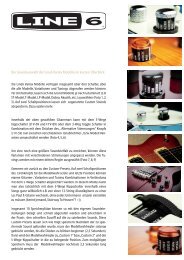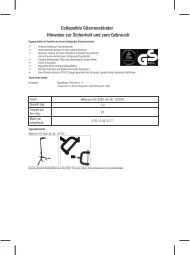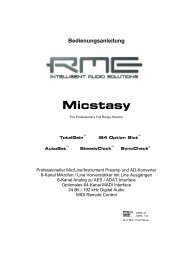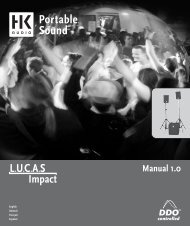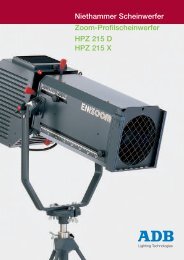You also want an ePaper? Increase the reach of your titles
YUMPU automatically turns print PDFs into web optimized ePapers that Google loves.
10:5 MIDI preferences<br />
MIDI Channels<br />
Show Session MIDI<br />
There are a number of song-based preferences concerning the behaviour of the Groove engine. Click the Show MIDI Song Settings<br />
button to view and edit these Preferences.<br />
Song preferences are saved with a BFD2 program. Therefore, they can be set independently for each BFD2 session.<br />
Song preferences allow you to save a set of defaults to use as initial settings when BFD2 is launched. They can be changed on a<br />
per-session basis while retaining the defaults unless they are specifically changed and re-saved.<br />
MIDI Input Transformations<br />
Auto pedal event<br />
This setting is to be used when using variable hihat control with electronic drum brains which do not send out a pedal (foot-chick)<br />
note automatically when the hihat pedal is closed.<br />
When enabled, BFD2 generates and play a pedal note whenever the hihat height MIDI CC reaches the first value within the<br />
‘closed zone’ defined with the Variable zone slider for the Variable Tip articulation (see section 9:3).<br />
If your drum brain sends out a pedal note when the hihat pedal is fully depressed (D-Drum and V-Drum brains fall into this category),<br />
then you should disable this setting.<br />
Auto splash event<br />
When using an electronic drumkit with variable hihat controller, enabling this setting causes BFD2 to generate a hihat splash<br />
sound when the hihat pedal is closed and opened in very quick succession.<br />
Choke with aftertouch<br />
Enable this option in order to make BFD respond to polyphonic pressure (aftertouch) signals for choking cymbals. This method of<br />
cymbal choking is commonly implemented in electronic drum brains such as those in V-Drum and D-Drum systems.<br />
MIDI display<br />
-2 octave naming<br />
-1 octave naming<br />
Some sequencers and MIDI controller devices use an octave numbering system which begins at C-2, rather than C0, while some<br />
others use C-1 as the lowest key..<br />
These settings allow you to set the note numbering convention according to your own preference. The -2 octave numbering setting<br />
is enabled by default due to the fact that it seems to be the most common system in the major sequencing hosts.<br />
1



